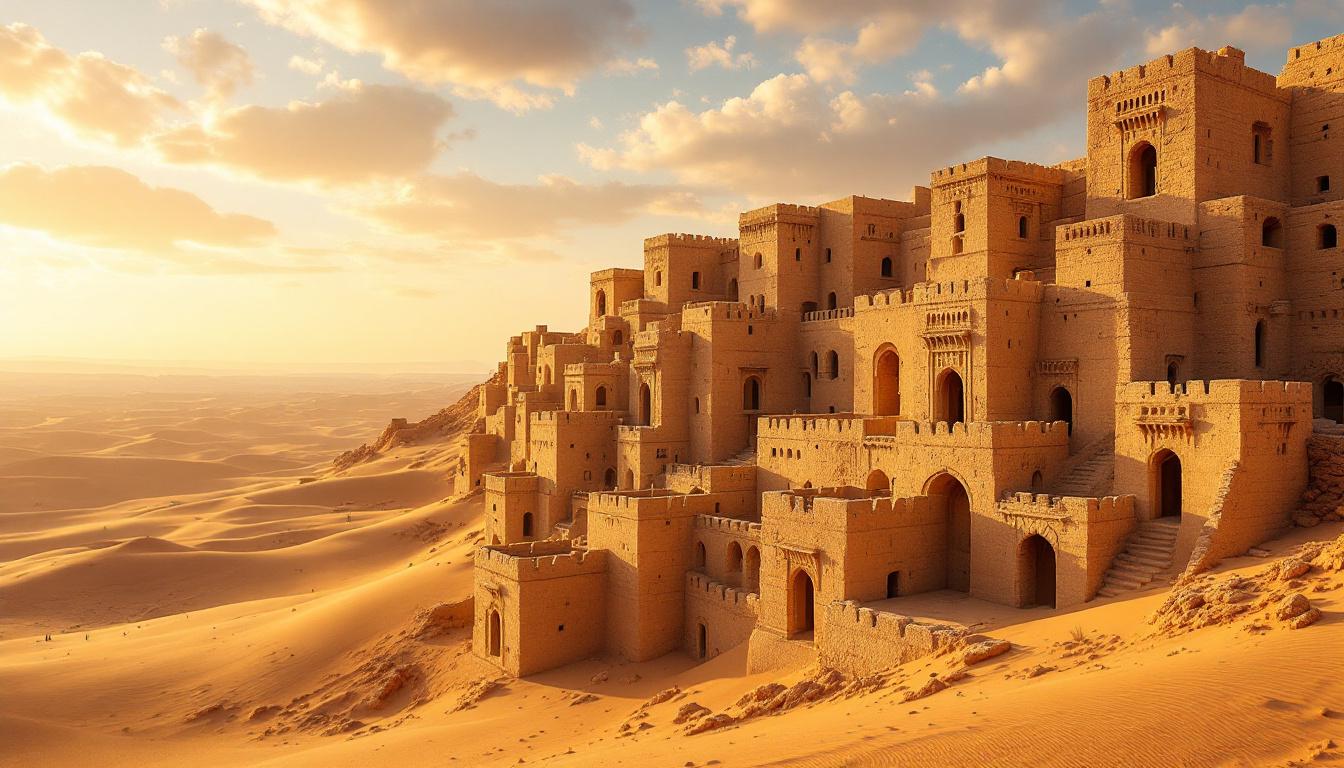I stumbled upon Ksar Ouled Soltane while driving through Tunisia’s desert badlands, following a hand-drawn map from a local guide in Tataouine. What I thought would be a quick Star Wars photo stop became the discovery that completely changed how I approach archaeological tourism. This 17th-century Berber fortress offers everything Petra promises—ancient architecture, desert mystique, cultural immersion—without the crushing crowds or $80 entrance fees.
The moment I climbed those weathered stone steps into the first courtyard, surrounded by 287 perfectly preserved ghorfas, I realized I’d found something extraordinary. While tour buses dump thousands into Petra’s narrow siq daily, I had this architectural marvel entirely to myself, free to explore every vaulted chamber and climb every ancient staircase at my own pace.
That accidental discovery three years ago completely transformed my travel philosophy. Now I skip the world’s most famous archaeological sites entirely, seeking out these authentic alternatives where culture hasn’t been commodified into theme park experiences.
The accidental discovery that changed everything
Following local knowledge over guidebook routes
My Berber guide Mohamed mentioned an “old granary where they filmed Star Wars” as we discussed desert excursions over mint tea in Tataouine. No tour company brochures, no UNESCO signs—just a local’s casual reference to a place his grandfather helped restore in 1997. That conversation led me 30 minutes south to discover what locals call “the most beautiful ksar in southern Tunisia,” completely unmarked in my travel guides.
The Star Wars connection that sparked curiosity
Walking through those multi-story chambers, I understood why Lucasfilm scouts chose this location for Anakin’s slave quarters in The Phantom Menace. The vaulted ghorfas, built into hillside stone, create an otherworldly fortress aesthetic that required zero Hollywood modification. Unlike the crowded Mos Espa set nearby, this location maintains its mysterious cinematic quality because it’s still authentically lived-in by the surrounding Berber community.
What I found that guidebooks never mention
Architecture that tells authentic stories
Each ghorfa served as a family’s grain storage vault, protected by thick stone walls and ingenious ventilation systems that kept supplies cool in 40°C desert heat. I spent hours photographing the interplay of shadow and light through these chambers, understanding how Berber engineering solved survival challenges that Petra’s ornamental tombs never addressed. This wasn’t architecture for the dead—it sustained living communities for centuries.
Cultural encounters impossible at major sites
Local artisan Fatima showed me traditional pottery techniques her grandmother taught her, using clay from the same hills where the ksar stands. She explained how each family’s ghorfa was positioned according to tribal hierarchy and harvest cycles—insights no audio guide at Petra could provide. These spontaneous cultural exchanges happen naturally when tourism hasn’t overwhelmed local life.
The transformation that surprised me most
Authentic solitude in an interconnected world
Standing alone in that upper courtyard at sunset, listening to the call to prayer echo across desert valleys, I experienced the meditative silence that Petra’s 1.1 million annual visitors have completely destroyed. The absence of selfie sticks, tour group chatter, and vendor harassment allowed genuine connection with the space’s spiritual energy—something I hadn’t felt at a major archaeological site in years.
Cultural respect replacing tourist performance
Without entrance barriers or time constraints, I naturally slowed down, observing proper respect for this sacred space. I learned to greet elders in Arabic, remove shoes before entering certain chambers, and understand the site’s continuing role in community gatherings. This organic cultural education replaced the performative “cultural experience” that major tourism sites manufacture.
Why I’ll never travel the same way again
The economics of authentic discovery
My entire day at Ksar Ouled Soltane—including transport from Tataouine, local guide fees, and traditional lunch—cost less than Petra’s single-day entrance fee. That $75 savings funded three additional days exploring other undiscovered ksour throughout southern Tunisia, multiplying authentic experiences rather than limiting them to one overcrowded site.
Supporting communities over corporations
Every dirham I spent directly benefited local families—Mohamed’s guiding service, Fatima’s pottery workshop, the small café owner who shared homemade harira soup. At Petra, tourism revenue filters through international hotel chains and bus operators, rarely reaching the communities preserving these cultural treasures like the Berber families maintaining Ksar Ouled Soltane.
Three years later, I’ve discovered dozens of these authentic alternatives to overcrowded landmarks across North Africa and beyond. Each accidental discovery reinforces the same truth: the world’s most meaningful cultural encounters happen where tourism hasn’t yet overwhelmed local life. Ksar Ouled Soltane taught me that authentic travel requires courage to abandon famous names for unknown treasures.
Planning your authentic discovery
When should I visit Ksar Ouled Soltane?
Visit between October and April when temperatures stay below 30°C. Early morning light creates the most dramatic photography conditions, while late afternoon offers perfect temperature for exploring the upper chambers without crowds.
How do I get there from Tataouine?
Take a shared taxi (louage) for 2 TND, rent a car for complete flexibility, or arrange private guide services through local hotels. The 30-minute drive south offers stunning desert landscapes worth the journey alone.
What should I expect culturally?
Dress modestly, learn basic Arabic greetings, and approach with genuine curiosity rather than tourist entitlement. Local families may invite you for tea—accept graciously and reciprocate their hospitality with respectful interest in their traditions.
Is it really better than Petra?
For authentic cultural immersion, architectural appreciation without crowds, and meaningful local connections, absolutely. If you need UNESCO validation and tour group infrastructure, stick with Petra’s commercialized experience.
How can I travel here responsibly?
Support local guides, buy directly from artisans, respect photography boundaries, and engage with genuine interest in Berber culture rather than collecting Instagram content. Your respectful approach helps preserve this site’s authenticity for future travelers.
